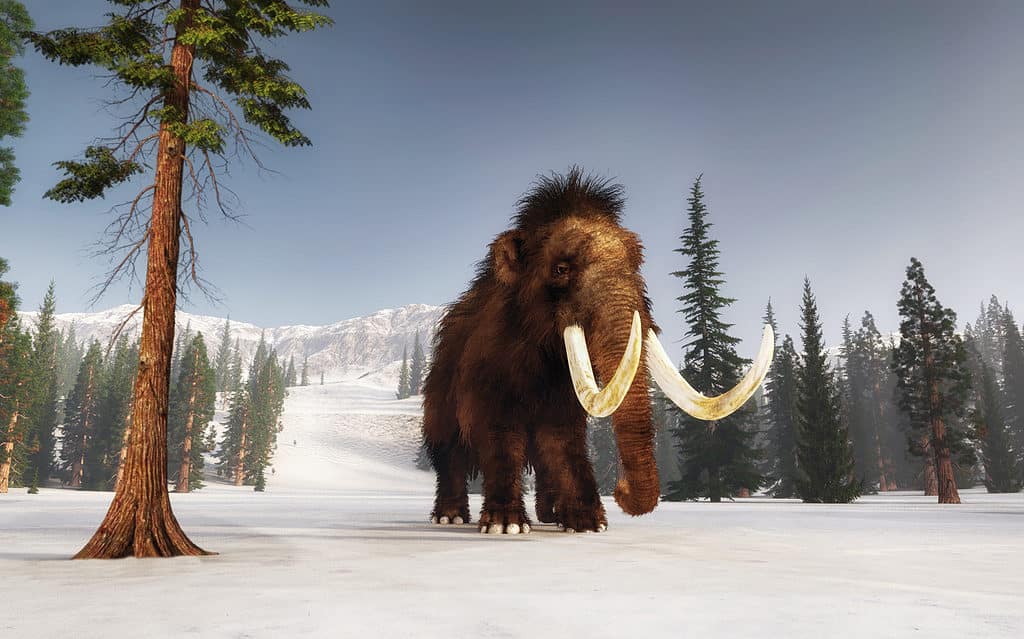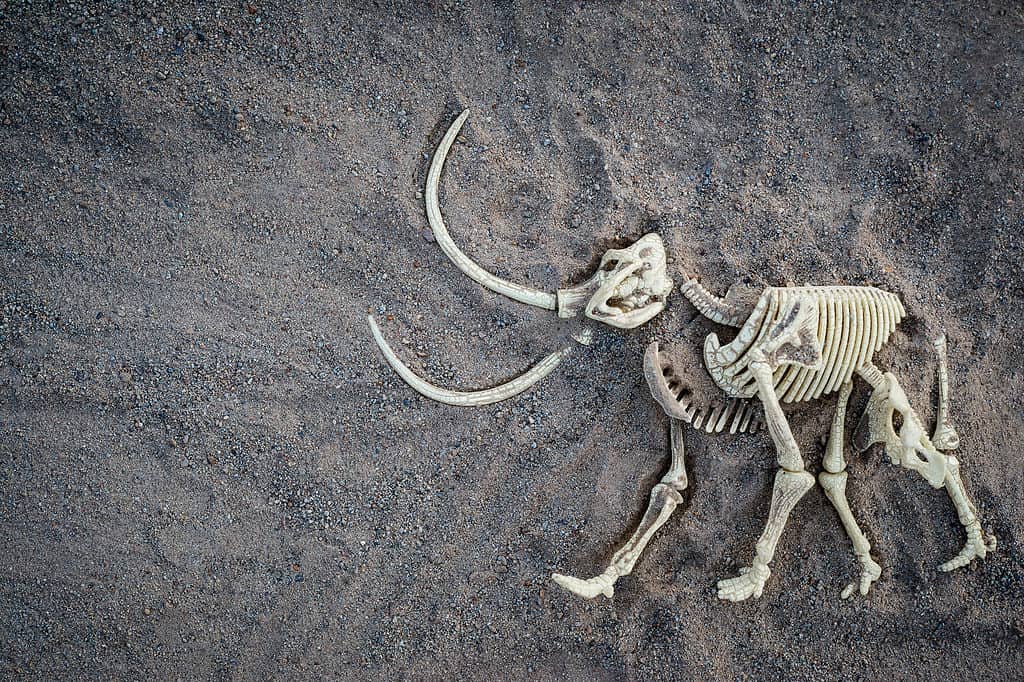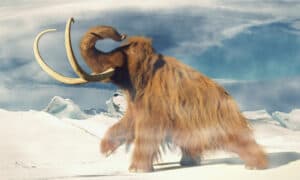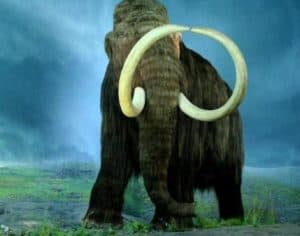There are few mega-fauna (huge animals) that are as interesting or famous as the woolly mammoth. These gargantuan creatures were alive for humans to see, but not recently enough for anyone living in the past few hundred years to remember. Still, these cold-roaming giants did exist and have an extremely unique history and relationship with humanity, especially when it comes to their extinction. Today, we will be exploring some of that history to answer the question: When did woolly mammoths go extinct? The answer might surprise you! Let’s get started.
When Did Woolly Mammoths Go Extinct?
The woolly mammoth, also known as Mammuthus primigenius, went extinct roughly 10,000 years ago. This majestic creature roamed the Earth for around 300,000 years before ultimately disappearing.
In terms of physical features, the woolly mammoth was an impressive animal. They stood at an average height of 10-12 feet and could weigh up to 6 tons. Their most distinctive feature was their thick coat of fur, which helped them survive in the extremely cold conditions of the Ice Age. They also had long, curved tusks that could reach up to 14 feet in length. These tusks were used for a variety of purposes, such as foraging for food and defending themselves from predators. Additionally, woolly mammoths had a hump on their shoulders, which was made up of muscle and stored fat that helped them survive long periods of time without food.

The woolly mammoth, also known as
Mammuthus primigenius, went extinct roughly 10,000 years ago.
The Emergence of the Woolly Mammoth
The Ice Age was a period of time spanning from around 2.6 million years ago to 11,700 years ago, during which the Earth’s climate was much colder and ice covered a large portion of the planet. This period saw the emergence of various types of mega-fauna, such as the woolly mammoth, saber-toothed tiger, and giant ground sloth. These animals were adapted to survive in the harsh, icy conditions of the time.
The woolly mammoth was one of the most iconic animals of the Ice Age that we are aware of today. It was well-suited to life in the tundra and steppe environments, with its thick coat of fur and fat stores allowing it to survive in the freezing temperatures that were prevalent across most of the earth. Woolly mammoths were herbivores, and their diet primarily consisted of grasses, moss, and lichens. They lived in herds and were known to migrate in search of food, very similar to modern-day elephants. The woolly mammoth was a keystone species of the Ice Age ecosystem and played an important role in shaping the landscape through their foraging and migration habits.
The Last Woolly Mammoths
Although the species was functionally extinct ~12,000 years ago, there was one small population that made it much, much further into the future.
One small population of woolly mammoths managed to survive on Wrangel Island in the Arctic Ocean for several thousand years after the majority of their species went extinct as the Ice Age in which they thrived ended. These mammoths were isolated from the mainland due to rising sea levels from the receding ice and were essentially stuck on the island for about 10,500 years until their eventual extinction around 3,700 years ago. For reference, these mammoths were alive and well on the island after the pyramids were built in Egypt, showing just how relative these timeframes are.
Because of the isolation, unfortunately, the population of mammoths on Wrangel Island had limited genetic diversity which led to the “real” final extinction of the species.
Where Did Woolly Mammoths Live?
The woolly mammoth lived in a wide range of environments during the ice age, including tundra, steppe, and boreal forest. They were well-suited to these harsh conditions and environments which extended much further south than they do today. Woolly mammoths are known to have roamed across much of northern Asia, Europe and North America, with evidence of their presence in countries such as Russia, Siberia, Canada, and the United States.
However, as the ice age came to an end, the range of the woolly mammoth gradually contracted and eventually became restricted to isolated pockets such as Wrangel Island (mentioned above).

The woolly mammoth was well-suited to life in the tundra with its thick coat of fur and fat stores allowing it to survive freezing temperatures.
©iStock.com/Orla
Why Did Woolly Mammoths Go Extinct?
The exact cause of the extinction of the woolly mammoth is debated among scientists, but it is believed that a combination of human hunting and climate change played a major role.
Human hunting is believed to have contributed to the extinction of the woolly mammoth as early human populations expanded and began to hunt them for food, clothing, and tools. As human populations grew and became more efficient hunters, the population of woolly mammoths would have declined, making them more vulnerable to extinction.
Climate change is also believed to have played a major role in the extinction of the woolly mammoth. As the ice age came to an end, the Earth’s climate became warmer and more arid. This change in climate would have reduced the availability of food and water for the woolly mammoth, making it increasingly difficult for them to survive. Additionally, as the ice receded and the tundra turned into forest, the woolly mammoths’ habitat would have diminished and they could not adapt to new environment.
Overall, the combination of human hunting and climate change likely led to the extinction of the woolly mammoth.

It is believed that the extinction of the wooly mammoth was a result of human hunting and climate change.
©Lesterman/Shutterstock.com
Can We Bring Woolly Mammoths Back?
The possibility of bringing back the woolly mammoth, also known as “de-extinction”, has been a topic of scientific interest and debate. One approach to de-extinction is called “genetic resurrection,” which involves using genetic engineering techniques to reintroduce the woolly mammoth’s genetic code into the genome of an Asian elephant, the closest living relative of the woolly mammoth. However, this process is still in its early stages and many challenges remain to be overcome, including ethical and technical issues.
Another approach is called “mammophant” by cloning the woolly mammoth, but the process is not yet perfected and scientists are yet to find a well-preserved specimen of the woolly mammoth to extract nuclei from, which is necessary for the process.
In any case, de-extinction is a complex and controversial topic, and many scientists have raised ethical and practical concerns about the feasibility and consequences of resurrecting extinct species.
Up Next
- Woolly Mammoth
- 10 Incredible Woolly Mammoth Facts
- Woolly Mammoth vs Mastodon: What are the Key Differences?
The photo featured at the top of this post is © Dotted Yeti/Shutterstock.com
Thank you for reading! Have some feedback for us? Contact the AZ Animals editorial team.







